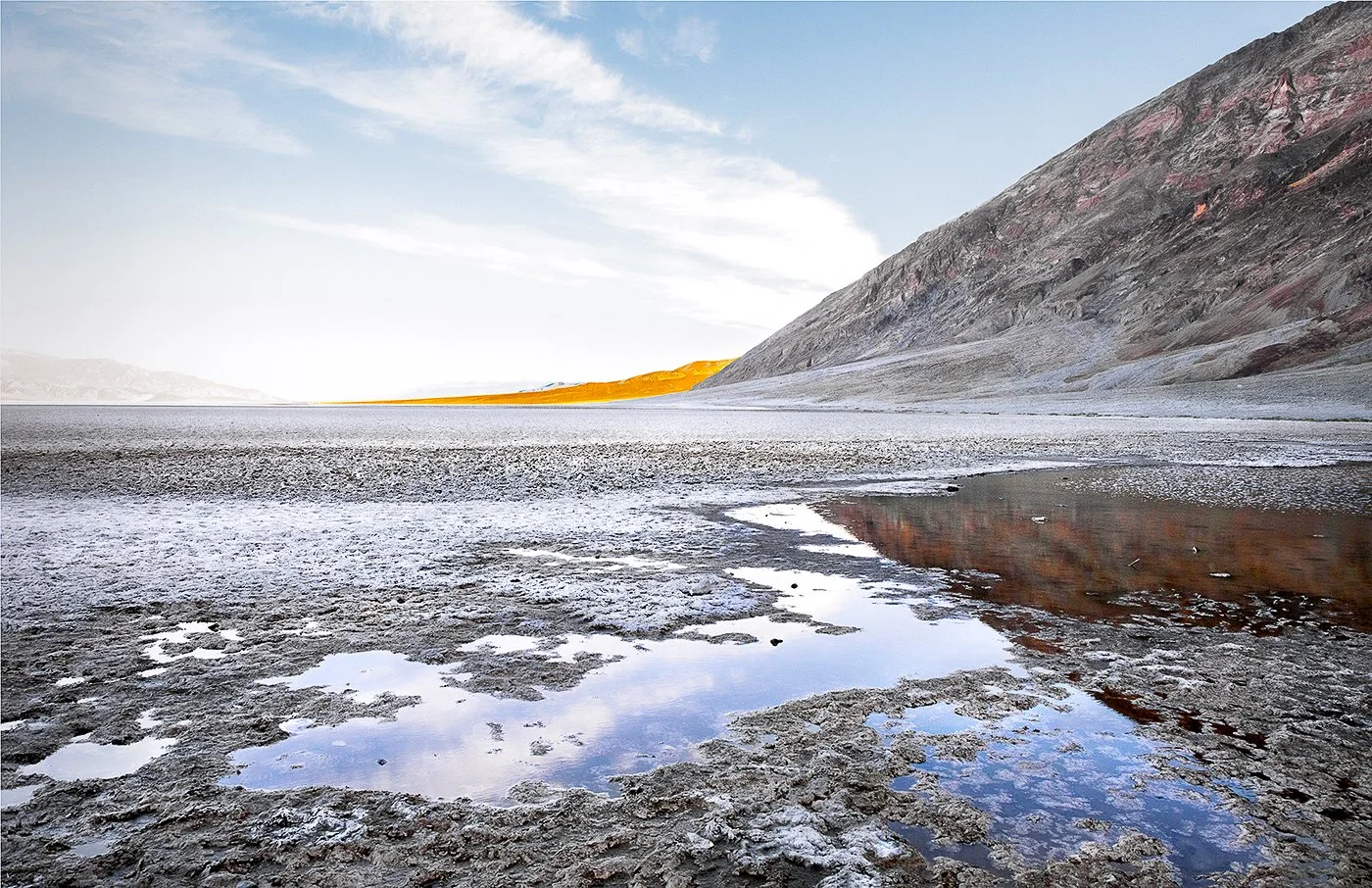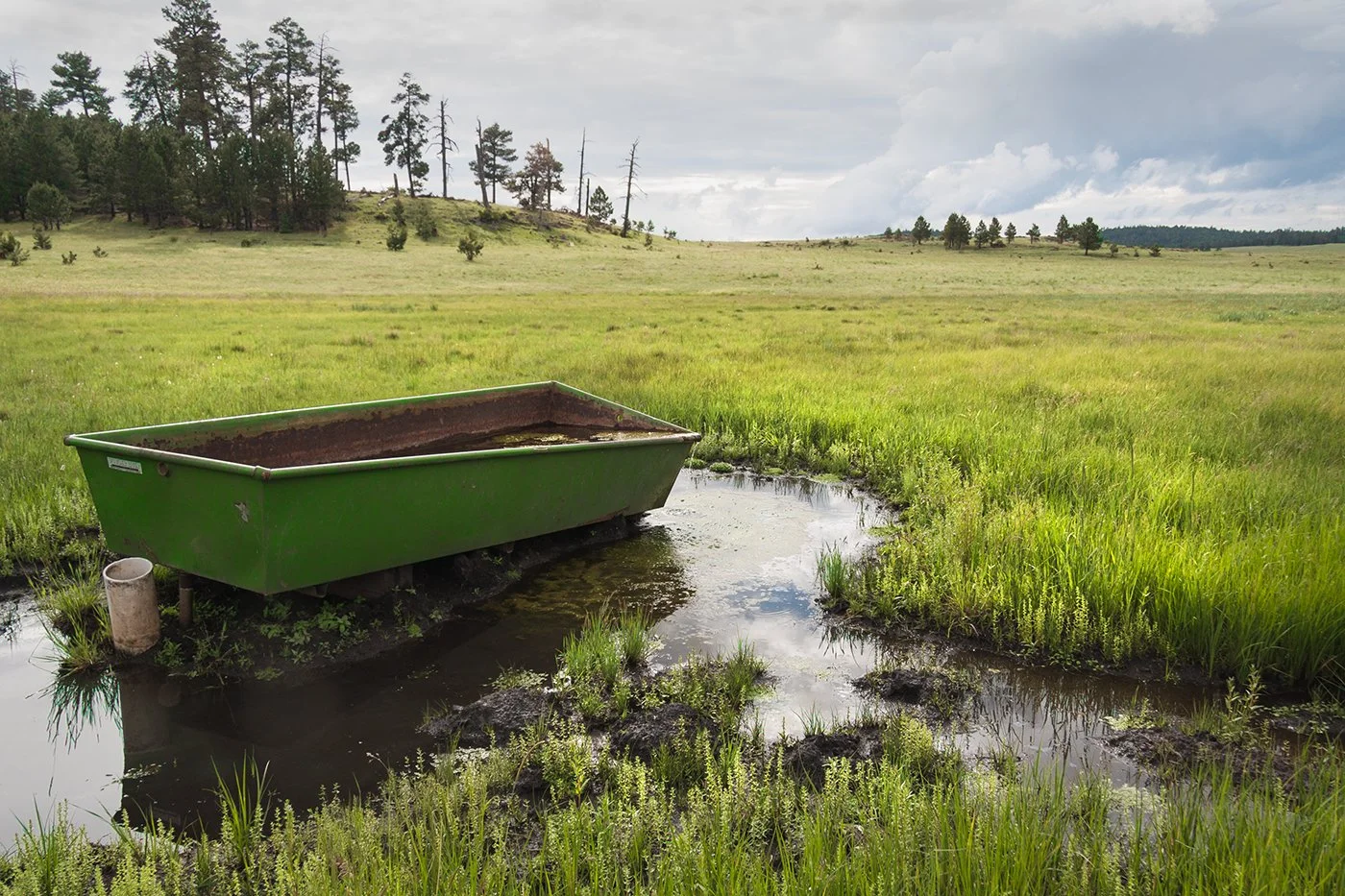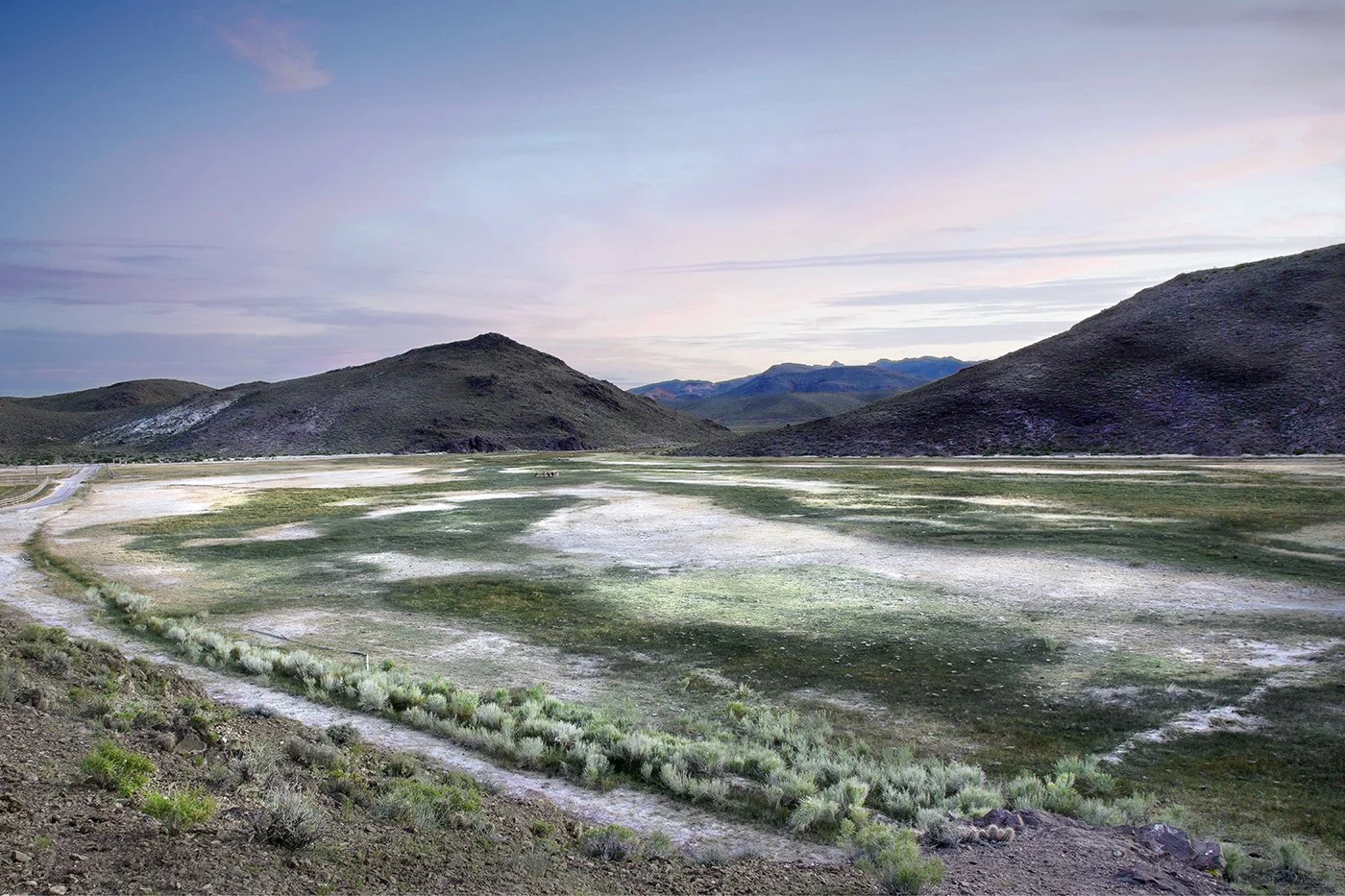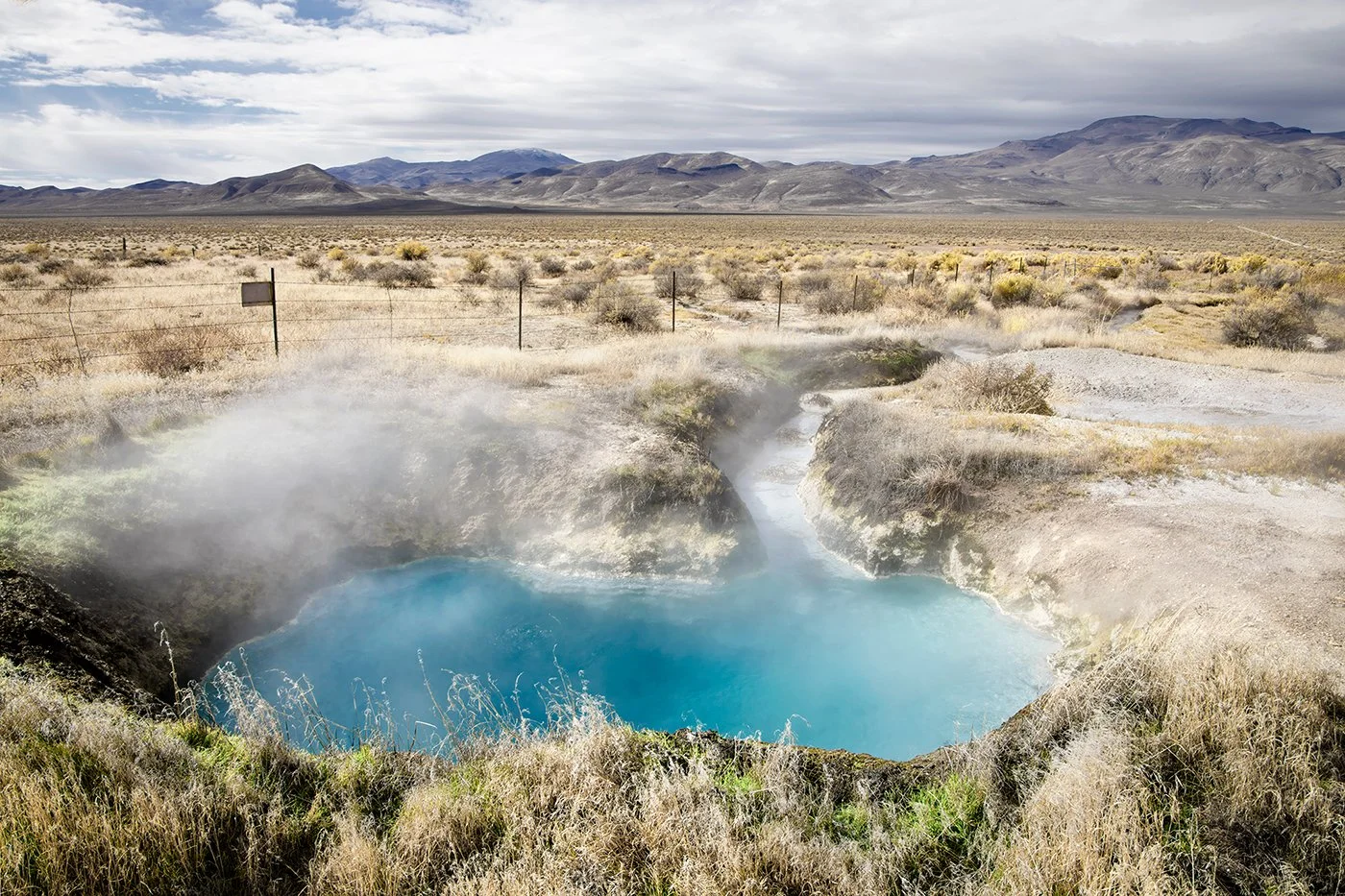




-
A vast network of freshwater veins and aquifer pools courses beneath land’s surface emerging as springs across deserts, riverbeds and oceans. These springs have long served as lifelines — sustaining diverse ecosystems in arid regions and guiding the migration of early humans who followed their scattered presence. Across cultures, water has been revered for its life-giving, renewing power. Yet today, that relationship is both endangered and largely forgotten.
My practice sits at the intersection of art and ecology. I use photography as a mode of witnessing and remembering springs with sensitivity to light, texture, and the traces of life or former abundance to create visual dialogues across time. A muted color palette mirrors the precarious beauty of these places — beauty that often conceals the depth of their decline.
Springs are more than ecological indicators; they are reservoirs of human and natural history. In a modern world where water flows effortlessly from taps, it's easy to lose sight of the true scale of water scarcity. My photographs aim to bear witness to what persists — and, in some cases, what has already been lost.Ultimately, this project is not only about environmental degradation. It is about perception, memory, and the unseen erasure of change. I hope to resist that erasure and invite reflection, and a reimagining of care, kinship, and restoration.
-
Archival Pigment Prints, 36" W x 26" H
